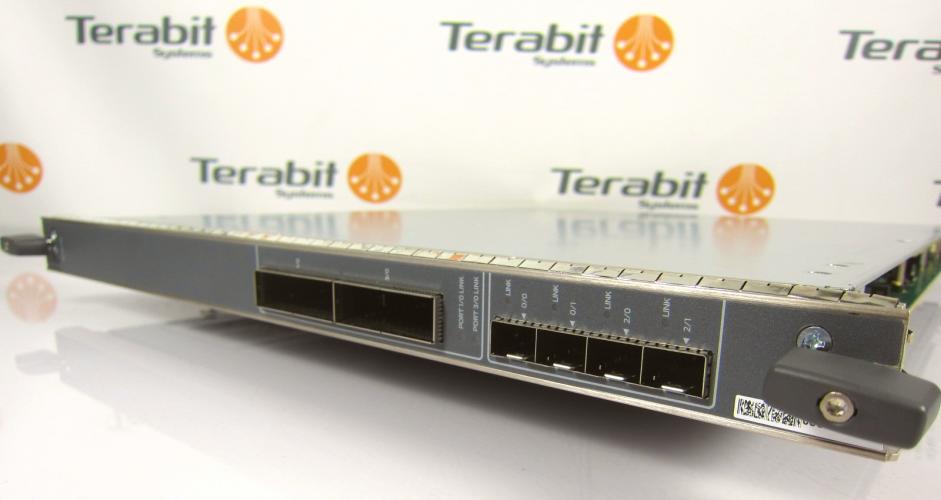Juniper MPC4 vs MPC5 100G differences
Juniper MPC4 vs MPC5 100G differences
Juniper 2x100GE + 8x10GE MPC4E vs 2x100GE + 4x10GE MPC5EQ
While almost identical in regards to the port type and count, the MPC5EQ-100G10G has additional features that would make it the more desirable card for Telcom and Service Provider networks as compared to the MPC4E-3D-2CGE-8XGE. For starters, the MPC5E supports hierarchical QoS (HQoS), which allows for the intelligent queueing of traffic based on user applied rules. However what makes the MPC5E a better long-term investment is it’s support for OTN (Optical Transport Networking). OTN is a protocol colloquially called ‘digital wrapper,’ which offers improved efficiency over traditional optical networks. While this isn’t the space to elaborate on the benefits, if you are unfamiliar with OTN I’d suggest you read any one of the numerous articles or white papers touting this next-generation, transparent, standardized protocol that could help you reduce transit costs, and increase flexibility of your network management with minimal retraining.
Juniper 32x10GE MPC4E vs MPC7E 10G
Both the MPC4E-3D-32XGE-SFPP and MPC7E-10G are high-density 10GbE modular port concentrator cards for Juniper MX edge routers. The first difference people will likely notice is the number of ports, 32 vs 40 10G SFP+ respectively. However the throughput of each is a major differentiator. With SCBE/SCBE2 control boards, the 32x10G MPC4E supports 260 Gbps of full-duplex traffic with intelligent oversubscription services, resulting in 16:13 oversubscription ratio (incoming packet rate > PFE, system can handle). Juniper uses Intelligent oversubscription services to reduce or eliminate packet loss, by prioritizing important packets (network control) and dropping those not deemed a priority (best effort). The 40x10G MPC7E supports full line-rate throughput of up to 400 Gbps. The MPC7E-10G also supports protocols such as MACsec which provides “point-to-point security on ethernet links between directly connected nodes.”
Let me know if you have any questions. You can reach me via email at charles@terabitsystems.com or call me at +1 (415) 483-1190.

